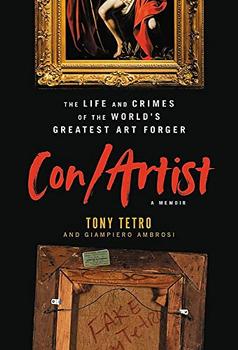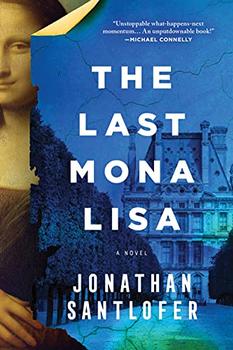Summary | Excerpt | Reading Guide | Reviews | Beyond the book | Read-Alikes | Genres & Themes | Author Bio

A True Story of Art, Thieves, and the Hunt for a Missing Masterpiece
by Edward DolnickThe little-known world of art theft is compellingly portrayed in Dolnick's account of the 1994 theft and recovery of Edvard Munch's iconic painting The Scream.
In the predawn gloom of a February day in 1994, two thieves entered the
National Gallery in Oslo. They snatched one of the world's most famous
paintings, Edvard Munch's The Scream, and fled with their $72
million trophy. The thieves made sure the world was watching: the Winter
Olympics, in Lillehammer, began that same morning. Baffled and humiliated,
the Norwegian police called on the world's greatest art detective, a
half-English, half-American undercover cop named Charley Hill.
In this rollicking narrative, Edward Dolnick takes us inside the
art underworld. The trail leads high and low, and the cast ranges from
titled aristocrats to thick-necked thugs. Lord Bath, resplendent in ponytail
and velvet jacket, presides over a 9,000-acre estate. David Duddin, a
300-pound fence who once tried to sell a stolen Rembrandt, spins exuberant
tales of his misdeeds. We meet Munch, too, a haunted misfit who spends his
evenings drinking in the Black Piglet Café and his nights feverishly trying
to capture in paint the visions in his head. The most compelling character
of all is Charley Hill, an ex-soldier, a would-be priest, and a complicated
mix of brilliance, foolhardiness, and charm. The hunt for The Scream
will either cap his career and rescue one of the world's best-known
paintings or end in a fiasco that will dog him forever.
 Arthur Golden, author of Memoirs of a Geisha
Outstanding...fascinating, expertly told, with characters as crisply-drawn as any Rembrandt, and...intrigue...found only in a thriller.
Arthur Golden, author of Memoirs of a Geisha
Outstanding...fascinating, expertly told, with characters as crisply-drawn as any Rembrandt, and...intrigue...found only in a thriller. Gerard O'Neill, co-author of Black Mass: The Irish Mob, the FBI, and a Devil's Deal
A fast-paced and beautifully written romp through the world of big-time art crime....A rollicking good ride.
Gerard O'Neill, co-author of Black Mass: The Irish Mob, the FBI, and a Devil's Deal
A fast-paced and beautifully written romp through the world of big-time art crime....A rollicking good ride. Mary Roach, author of Stiff: The Curious Lives of Human Cadavers
The Rescue Artist is a masterpiece. Engrossing, entertaining, often surreally hilarious.
Mary Roach, author of Stiff: The Curious Lives of Human Cadavers
The Rescue Artist is a masterpiece. Engrossing, entertaining, often surreally hilarious.Edvard Munch, Norway's most popular artist, died in 1944, aged 81. He was a painter, lithographer, etcher and wood engraver, most famous for his paintings of The Scream. . He created five different variations of The Scream (4 paintings and one lithograph) which is fortunate as the Norwegians do seem to have a habit of losing them. In 1994 one was stolen from Oslo's National Gallery, and then in 2004 another version was stolen from the Munch Museum (a tempura on cardboard version) along with Munch's Madonna....

If you liked The Rescue Artist, try these:

by Tony Tetro, Giampiero Ambrosi
Published 2022
The world's most renowned art forger reveals the secrets behind his decades of painting like the masters - exposing an art world that is far more corrupt than we ever knew while providing an art history lesson wrapped in sex, drugs, and Caravaggio.

by Jonathan Santlofer
Published 2021
A gripping novel exploring the Mona Lisa's very real theft in 1911 and the present underbelly of the art world, The Last Mona Lisa is a suspenseful tale, tapping into our universal fascination with da Vinci's enigma, why people are driven to possess certain works of art, and our fascination with the authentic and the fake.